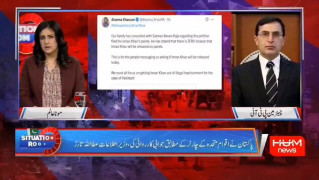[h=1]
Why Al Baghdadi and his ‘state’ will fail[/h]The Isil chief’s short record, which is about 10 days old, is far more complicated because no respectable religious entity has backed him
- By Joseph A. Kechichian | Senior Writer
- Published: 20:00 July 16, 2014
Although Hashemite rulers traced their roots to the Quraish tribe that gave the Muslim world Prophet Mohammad (PBUH), no Hashemite absconded the title of Caliph, even if the Prohet’s first four successors — Abu Bakr, Umar Ibn Al Khattab, Uthman Ibn Affan and Ali Ibn Abi Talib — demonstrated strong leadership qualities. Few future Caliphs made outrageous claims like Abu Bakr Al Baghdadi. The latest self-proclaimed “caliph’s” willingness to pilfer the political title, and his readiness to maim and kill those who stood in his way, were little more than futile efforts to secure power. What were his chances to be accepted as a Caliph?
Over the years, many frowned upon various titles, including the overused “Amir Al Mu’minin” (commander of the faithful). Various Moroccan dynasties, including current Alaouite rulers, kept the Amir Al Mu’minin title but shunned that of Caliph. Ebrahim Awad Ebrahim Ali Al Badri Al Samarra’i — formerly also known as Dr Ebrahim, on account of his doctorate in Islamic studies from the University of Islamic Sciences in Iraq, and better known by his nom de guerre Abu Bakr Al Baghdadi — now claims that he is a descendant of the Prophet (PBUH). As if this assertion was not sufficient, he recently added “Al Hussaini Al Quraishi” to his full name and — let it be known — he ought to also be called as the Amir Al Muminin. Still, his preferred title is “Caliph Ebrahim” in the territory that the Islamic State of Iraq and the Levant (Isil) has taken control of in northeastern Syria and western Iraq. Yet, and perhaps because he did not wish to limit his political conquest to merely these two countries, Al Baghdadi ordered a name change for his militia, from Isil to the geographically more ambitious “Islamic State”. Apparent modesty aside, Al Baghdadi wished to fill a vacancy left by the last Ottoman Sultan Abdul Majid II, who was ousted by Kemal Ataturk in 1924.
Although a holder of a doctorate in Islamic studies, what Al Baghdadi did not recall was the way various Caliphs met their fates, starting with the struggle that pitted the Shiite Fatamid Empire in Egypt against the Sunni Abbasid Caliphate in Iraq. The Abbasids under the Caliph Ma’mum (r. 813-833) and his brother and successor Al Muatism (r. 833-842), created a loyal army mostly composed of non-Arabs who were known as the Mamluks, ostensibly to protect the empire. In the event, the Mamluk army could not deliver, as Baghdad fell in 1258 and the last Abbasid Caliph perished at the hands of the Mongol ruler Hulagu. It was then that the Mamluks took power in Egypt as they sought, starting in 1261, to re-establish the ‘Abbasid Caliphate in Cairo. Significantly weakened, the Abbasid caliphs in Egypt — from Al Mustansir (r. 1261-1662) to Al Mutawakkil III (5. 1508-1517)— gradually conceded their political authority. With the rise of the Ottomans, Al Mutawakkil surrendered to Sultan Salim I, who became the new Caliph. Various disputes between the Ottomans and the Mughals in India meant fresh clashes amongst savvy men anxious to don the title and secure legitimising features. Interestingly, Mughal emperor Akbar [whose legendary Hindu wife Jodha became even more famous], declared himself “Khalifat Al Zaman” (caliph of the time) in 1579, a title that his successors kept until 1858, when Bahadur Shah Zafar, the last Mughal, was unceremoniously packed off by British authorities into exile. Sultan Abdul Majid II ended his days on the French Cote d’Azur.
Providing stability
What Al Baghdadi wished to do was to replace the last fallen Caliph, though the Egyptian revivalist party Hizb ul-Tahrir, which was created in 1953 as a Sunni Muslim organisation in Jerusalem by a renowned Palestinian scholar/judge, Taqi Al Din Al Nabhani, beat him to it. Al Nabhani believed that only a Caliph could provide stability and security although he was opposed to persecuting non-Muslims. The Palestinian wished to apply Sharia, but only on Muslims. He was an anti-Zionist without being an anti-Semite and while Al Nabhani considered Israel to be an illegal entity, his was a political rejection, not a religious crusade.
Al Baghdadi’s short record was far more complicated because no respectable religious entities backed him. Al Azhar University scholars kept silent and the “ulama” (religious authorities) from other leading institutions played for time. The mere fact that few offered any comments on Al Baghdadi illustrated how he was perceived and, perhaps equally important, how most understood that clerics no longer occupied critical roles in the decision-making process. Of course, this did not mean that theocratic figures were not relevant to Arab and Muslim polities. Rather, few Muslims were ready to back extremist pronouncements, preferring participatory systems. Many wished to live in peace and work to create wealth.
Ironically, when Al Baghdadi spoke last week in a Mosul mosque, many noticed his shining and presumably expensive watch. His chances of being accepted as the latest were truly remote.
Dr Joseph A. Kechichian is the author of Legal and Political Reforms in Saudi Arabia (London: Routledge, 2013).




























